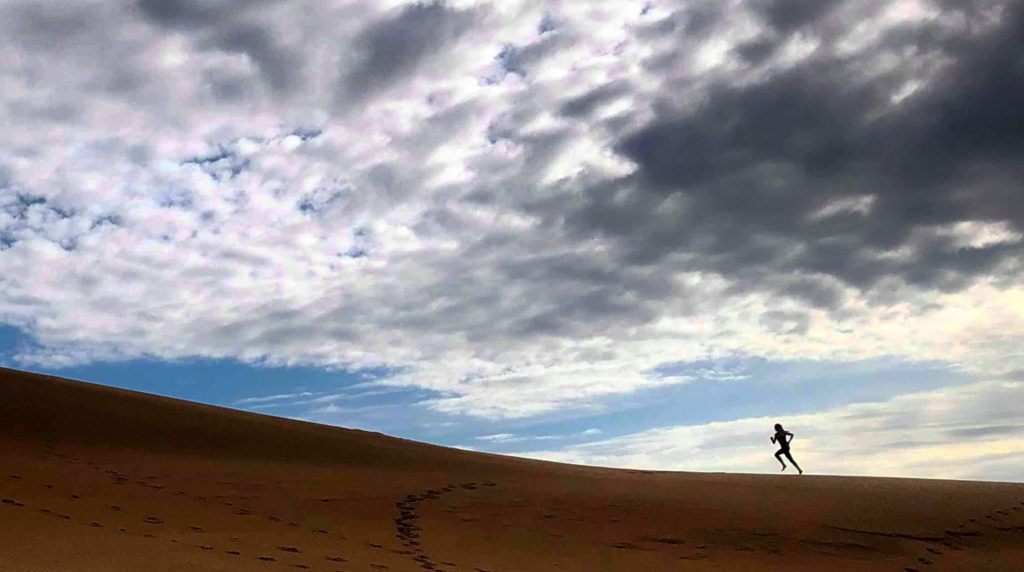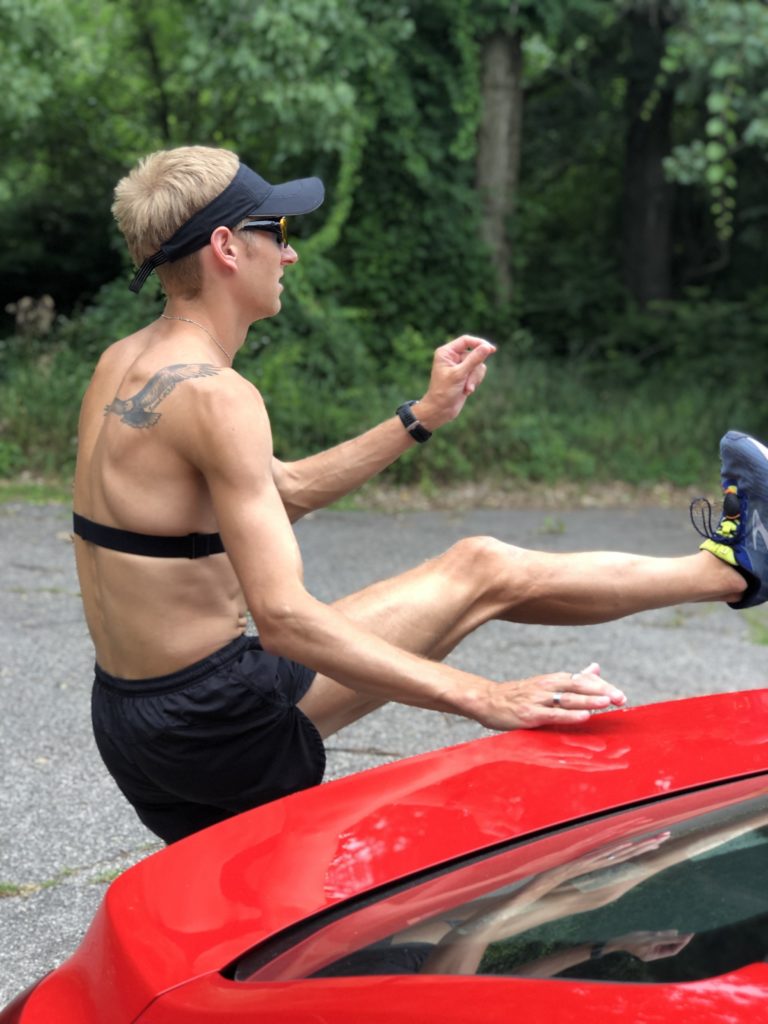Becoming a Stronger Animal: Training Guide part 2
In high school, Andi had the great privilege of running under the tutelage of an incomparable legend of high school coaching: Dave Hodgkinson. To those who knew of him, he was something of a master or king. To those who ran under him, he was exactly the right balance of personal attentiveness, profound insight, and practical sense.
As Andi will often tell, one of the more memorable insights “Hodge” once shared with her was, in very simple terms, “Andi needs to be a stronger animal.” If only we all had a Hodge under whom to learn during our formative years! Why? Because that simple point may very well be one of the most influential realities on long-term distance running success – defined here simply as thriving in the sport to whatever degree you aspire.
Therefore, on that foundational insight I will build the second installment (of 3, I should add) in my essentials training guide.
(If you missed it, part 1 in the training guide was all about building the aerobic base.)

As Soon as Possible
I believe I can speak for every physical therapist ever (bold, I know) when I say that the vast majority of times someone says “this hurts,” it is a direct result from either a significant weakness or a lack of mobility.
The exceptional value of that physical therapist, then, is in his/her ability to quickly and accurately identify and treat those weaknesses and/or immobilities. That’s also why patients tend to see quick results. It doesn’t take much to influence general strength or mobility. But it does take consistent discipline to maintain proper strength and mobility.
So when should someone start trying to integrate (if you don’t already) the concepts below? Now. (Unless this is race week for you… then maybe you avoid making any notable changes to anything.)
Start with a Simple Routine
Nearly every high school (and most every college) runner takes for granted the before/after routines. All those silly drills coach made you do before and after running? Thank him/her when you get a chance. And keep doing them.
Truthfully, the actual specifics of the routine are not nearly as important as the simple fact that you are doing something on a regular basis. Even so, there are a few dynamics that tend to be most important for runners.

By the way, nearly everything I am about to share comes from or is based on either the work of Jay Johnson (well known for his dynamic GSM – general strength and mobility – routines) and Adam Homolka of Endurance Rehab and Athletics in Ada, MI (our physical therapist who specializes in distance running – we wouldn’t be doing what we are doing today without him!).
My top 3 focus areas:
- Posterior Chain: for runners, this is where the work happens. Shoulders, back, glutes, hamstrings (and throw in calves)… you need to be doing things that specifically target all of those on a regular basis.
- Hips: considering that a number of smart running people have cited hips has one of the most significant sources for running injuries (not that your hips are what gets injured but that hip weakness/immobility causes other injuries), I’m inclined to spend some time focused there, as well.
- Core: for all that other stuff above to engage, fire, and function properly, you need a stable core. And as a distance runner, you need that core to be stable for a very long time.
Those three in mind, find a routine or a couple routines that effectively target them in dynamic ways and make that part of your daily exercise. If you want to know specifically what exercises and such I might recommend for those, take a look at my example at the bottom of this post.
Strength-focused Running

PC: Kylie Shuneson
Aside from general strength exercises the second layer to strengthening for runners is hill work. Everyone dreads it. Everyone does it. Most distance runners do it completely incorrectly.
If you recall from part 1 of the training guide, anaerobic activity is generally a bad idea for anyone attempting to build an aerobic base. If I haven’t convinced you of that yet, read Livingstone’s book. The fact is that hill sprints or other forms of classic hill workouts are basically low-impact interval workouts. There certainly is a time for such a thing, but not during the base phase when the goal is to stoke that aerobic base as hot as possible before the target race.
The alternative is one of two things.
- Run hilly routes for moderate or steady effort runs.
- Do something like Lydiard’s notorious hill bounding workout.
Not sure what hill bounding is? In short, it’s a circuit run where you (ideally, according to Lydiard via Livingstone’s book)
- do either high knees, hill bounding, or hill springing while going UP the hill (pace is irrelevant, and the intent is to make sure the HR isn’t spiking crazy high),
- jog easy for equal time
- run fast and relaxed down the hill (again, not so fast that HR is spiking)
- do some blend of floating fartleks for equal time
- repeat

Running on hills is a great way to build strength without needing to take extra time and can be beneficial even for an easy run. The goal is simply to benefit from the hills without excessively hard effort.
Lifting Actual Weights
If you were to ask me whether you should lift weights as a part of your training plan, I would first respond by asking your age. Developing athletes can benefit significantly from time spent doing a simple, balanced lifting routine. Aging runners may likewise benefit (for different reasons). In either case, though, and for anyone else who wants to spend time in a gym, my approach is as follows:
- Keep it simple. Don’t exhaust any one muscle group, and focus on those lifts that most closely related to the muscle groups utilized in running (see above).
- Focus on high weight, low repetition with lots of rest. Yes, distance runners everywhere may cringe. But the truth behind lifting weights is very nearly identical to running. In that sense, the common perspective (low weight, high reps) is basically another form of an anaerobic workout for your muscles. However, if you lift high weight for 3-5 reps, you keep the effort confined to the alactic side of things (that’s straight from Livingstone, and he explains it better in his chapter on weight lifting).
Lydiard himself was famous for saying that if athletes wanted to lift weights, they could just shovel some piles of gravel around. In my own experience, I have actually literally discovered the truth behind that sentiment. In simple terms, though, it is a lot easier to do harm than good by lifting weights.Proceed with caution.
Keep Things Loose
The M part of GSM being mobility, it is important to reflect on the complexity of flexibility. It’s complex because there are a lot of different reasons something might feel tight, and depending on the reason, certain approaches prove more or less effective.
Even so, I abide by 3 key practices that prove almost imperative to staying healthy and enjoying running.
- Before running: engage in some form of myofascial release every day. My preferences are (1) foam rolling, (2) tiger tail rolling, (3) orb massage, and (4) graston technique.
- After running: stretch. I’ve read a lot of nonsense claiming to debunk the concept of static stretching. Fact: when your muscles are warm and active (like after running), static stretching is wonderful. But even if it is something more dynamic (I’m also a big fan of yoga after running but find it harder to fit in a good 20-30min session), it’s necessary.
- Any time: Active Isolated Flexibility. Phil Wharton devised the technique and has published some great guides to help illustrate ways to perform AIF for different muscle groups and activities. I recommend the book. Either way, I have found no end to the clear difference I feel while running when I am doing AIF regularly (I don’t do it every day, but at least a couple times/week).

Here’s My Approach
Before getting into it, it’s important to note that I do NOT do these things every single run every day. Most days I do some of them from each list. However, I am also intentional about trying to touch on each of the important elements at least a few times each week. Here’s my big list.
Morning Routine
- I always have a short series of strength or coordination exercises crafted by my PT (Adam Homolka, Endurance Rehab) to address specific inadequacies (we update it every couple months, sooner if needed).
- Some examples include lunges on balance balls,
 glute bridges (often with adaptations), something for hips (always), some trunk or low-back thing (like twisting with resistance bands, sometimes on balance balls)
glute bridges (often with adaptations), something for hips (always), some trunk or low-back thing (like twisting with resistance bands, sometimes on balance balls) - Other elements I like to throw in first thing are push-ups and/or pull-ups, core exercises, planks with leg lifts
- Foam rolling
- Some active isolated flexibility
- *No morning sees all of these things together, but I try to keep a rotation so that I touch on each at least a few times in a given week.
Before Running Routine
- Jay Johnson’s lunge matrix and leg swings
- Dynamic drills that include high knees, A/B skips, hip stretches, hamstring swings, toe touches/swipes, side skips, crossover hip stretches, and more (rarely identical)
After Running Routine

- Jay Johnson’s myrtl circuit or some adaptation (he keeps changing it himself, so I feel like it’s okay for me to change it when I want as well)
- Squats, single leg squats, plyometrics related to single leg running motions
- A series of static stretches to cover the full spectrum of muscle groups likely used in running
- Sometimes AIF
- Sometimes yoga
- Any number of other things that I make up on the spot to supplement something that is tight, recently injured, or otherwise in need of attention
A Final Word
As with many things in training, the specific of how to become a “stronger animal” will and should vary, not just one athlete to another but even one month or week or possibly day to another. The amazing thing about our bodies is that they are always growing, changing, adapting, etc., and not always for the better. Consequently, our practices need to likewise adjust to best meet the current needs.

The one most clear statement I can offer on the topic is simply, to borrow Hodge’s words one more time, every runner looking to thrive in the sport needs to be a strong animal. You will feel better, run faster, stay healthier, and ultimately find greater fulfillment and joy in the sport if you do.
This article is part of a three part series:
Raise the Roof: The Why and How for Aerobic Fitness
Becoming a Stronger Animal
A Well Oiled Machine






Hodge was my coach at Caledonia High School too! He was absolutely amazing!!
That’s awesome, Mallory! Forgot you were there during those years – that was en epic Caledonia era!
Glad to hear, as well, that you affirm our estimation of him (we have a sneaking suspicion many others agree, but it’s good to hear from one who knew him before us, too!).
He really is! So cool that you had him as your coach too!
Due to the heavier training schedule, I haven’t been lifting due to time and because, if I lift at the higher intensity I like to lift, my key workouts suffer (like you have mentioned). I really miss pumping iron. I just love the way it makes me feel like…”a stronger animal.” lol Til next off season, my inner Hulk.
And you know what, Sage? You touched on a very important consideration in all of that: seasons.
None of us should ever try to do everything all the time in terms of training. There’s too much, for starters (I’m leaning on you for that one – good luck in the Iron Man this weekend, BTW!!), but also, it makes way more sense to have periods of focus (consider: training phases like base, strength, speed).
So maybe Mr. Hyde has to cede some time to Dr. Jekyll for a bit, but that’s not to say Dr. Banner won’t be getting mean, green, and LIT come winter!
I’m enjoying reading this series, thanks so much for posting it 🙂
Awesome! Hope it’s making sense! (these things always seem to make more sense in my head than spoken aloud…)